The views expressed in our content reflect individual perspectives and do not represent the authoritative views of the Baha'i Faith.
Is art meant to be beautiful? If so, why is there so much art that prizes ugliness, that seems to scream at the viewer? Could it be, perhaps, that beauty and ugliness can be equally valid and important?
In this series of essays we’ll examine both forms and consider their purpose. Let’s begin by examining how the ugly can instigate change. The beauty is in the result — the transformation. Then we’ll move on to the necessity of the beautiful.
Cartoonist/philosopher Ashleigh Brilliant wrote: “Beauty can come out of pain — but that doesn’t make pain beautiful.”
Sometimes we need to be (metaphorically) slapped in the face — or be the “slapper” — to move from knowledge, to volition, to action. We occasionally need a bracing wake-up call to care and to help others care enough to realize change is needed, urgently needed, and thus want to see the change happen and then determine to work towards accomplishing that change. Otherwise, it’s easy to remain complacent in the face of injustice when we ourselves are protected by our own personal cocoon of safety, be it our family, our job, our privilege, or our material security.
That’s one of the reasons I think Baha’u’llah, the prophet and founder of the Baha’i Faith, so strongly emphasized the theme of justice in his teachings. He wrote:
Justice is a powerful force. It is, above all else, the conqueror of the citadels of the hearts and souls of men, and the revealer of the secrets of the world of being, and the standard-bearer of love and bounty.
In Terre Ouwehand’s dramatic monologue, Tahirih, about the great Baha’i heroine and martyr, we overhear her attempt to console the wife of the kalantar (mayor), in whose home she is living under house arrest. In this excerpt, Tahirih explains to his kind wife, who has grown fond of her, the importance of shock value and the wisdom behind the ill treatment she has endured. Her words also contain a subtle hint about her imminent execution:
Those who are crucified, stoned, burned, beaten, have the breath wrenched out of them — they teach. They are heard. Their tragedies widen the eyes of the people and unstop their ears. The world is a bazaar — the strollers are moved by spectacle. So it was that I appeared before the assembly unveiled — to move them — to move their blood, their brains, their souls!
Thus, the need for the artist to move the world toward justice, one soul at a time.
I don’t think there’s ever been a time when some art didn’t express dissatisfaction with injustice or challenge the status quo. Whether it be poetry, literature, drama, comedy, paintings, murals, cartoons, dance, songs, storytelling, performance art, street art, or any other form of artistic expression, people will use their art to protest and try to shake up society, from the grass roots to the ruling class.
War, prejudices, human rights, hypocrisy, and economic inequality are common targets of protest artists who are, in fact, agents of change.
Art Against War
Anti-war songs and poetry, with their long history as artistic vehicles and cries for justice, remain in both the conscious and subconscious mind, and cause us to continue to ponder and consider their messages.
For example, the Pete Seeger song Where Have All the Flowers Gone? sings of the dream of a young girl to marry. She finds her love, it blossoms, then withers as he becomes a soldier and she is left behind. He returns, not to her, but to the graveyard. War has withered and destroyed the flower of their youth and their love.
In the 1987 song I Don’t Want to Be a Hero by Johnny Hates Jazz, the reluctant recruit offers this heartbreaking lament:
Oh send me off to war
In a far away land
I never knew existed
Subject me to the truth
To the horror and pain
Until my mind is twisted
The young man in the song doesn’t want to go off to kill someone he doesn’t even know just to satisfy the anger of the rulers who can’t get along. He fears returning home wounded, not just physically but mentally, emotionally, and spiritually.
The Baha’i Peace Plan
In its quest for justice and peace, the Baha’i Faith envisions a future society that will eliminate the needs and causes of war. Here, the Universal House of Justice – the democratically-elected leadership body of the world’s Baha’is – briefly explained that supremely artistic, spiritual, and practical vision in a letter dated September 11, 1984:
Baha’is … do not believe that war is very necessary and its abolition is one of the essential purposes and brightest promises of Baha’u’llah’s Revelation. His specific command to the kings of the earth is: ’Should any among you take up arms against another, rise ye all against him, for this is naught but manifest justice.’ [Shoghi Effendi, the Guardian of the Baha’i Faith, has explained that] … the unity of mankind implies the establishment of a world commonwealth, a world federal system, ’… liberated from the curse of war and its miseries … in which Force is made the servant of Justice …’ whose world executive ’backed by an international Force… will safeguard the organic unity of the whole commonwealth.’ This is obviously not war but the maintenance of law and order on a world scale. Warfare is the ultimate tragedy of disunity among nations where no international authority exists powerful enough to restrain them from pursuing their own limited interests.
The Power of Anti-War Poetry
Ed McCurdy’s Last Night I Had the Strangest Dream is one of several songs that used the opposite tack. Instead of showing us the negative via the ugliness of war, he dangled the carrot of the positive and the beauty of the possible, as the dream sees that “the world had all agreed to put an end to war:”
I dreamed I saw a mighty room
The room was filled with men
And the paper they were signing said
They’d never fight again
And when the papers all were signed
And a million copies made
They all joined hands and bowed their heads
And grateful prayers were prayed
And the people in the streets below
Were dancing round and round
And guns and swords and uniforms
Were scattered on the ground
This song became so popular it was recorded by numerous artists including Simon & Garfunkel, John Denver, Pete Seeger, Bob Dylan, and Johnny Cash, to name just a few. Adopted as the official song of the Peace Corps, it was sung by a choir of children as the Berlin Wall crumbled.
Poets also attack the very concept of war. During World War I, the famed British poet and soldier Wilfred Owen wrote in graphic ugliness of the carnage and the suffering that soldiers endure. He ends this poem by imploring the reader:
My friend, you would not tell with such high zest
To children ardent for some desperate glory,
The old Lie: Dulce et decorum est
Pro patria mori.
That final line, taken from the Latin odes of the Roman poet Horace, means “It is sweet and proper to die for one’s country.” The poem was published posthumously in a 1920 book simply titled Poems. Wilfred Owen’s preface reads: “This book is not about heroes … My subject is War, and the pity of War. The Poetry is in the pity.”
That pity can’t help but well up in the reader of the Baha’i poet Roger White’s January 1991: Israel. The poem opens with this memory:
Other-worldly in our goggled headgear,
mock monsters in a monstrous time,
we huddle in sealed rooms and wonder
whether this is the promised Armageddon,
shivering to think what reign it ushers in.
Further on, White stuns us with the fact that the “goggled headgear” of the gas masks meant to protect, sometimes had the opposite effect:
not too soon to mourn the innocent,
the few elderly women and the child,
smothered in their masks, through ignorance
of the mechanics of protection.
The shock value he employs in Nursery Rhyme is especially effective to shake up our sensibilities, awaken them from their apathetic slumber as he illustrates what happens when war turns normal people into unthinking, unfeeling killing machines as seen in these two stanzas:
Georgie-Porgie Pudding-and-Pie,
Assisted by some others,
Strafed the children, made them die,
and broke the hearts of mothers.
Margery Daw, King Cole and Mary,
Well see your garden grow,
With mushroom cloud, quite contrary,
And corpses, row by row.
War is not the only ugliness attacked through art. In the next part of this series, we’ll examine other forms of artistic protest.







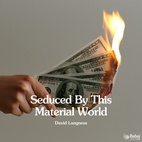
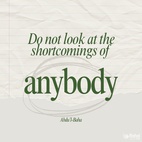
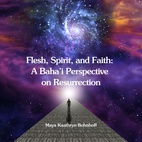
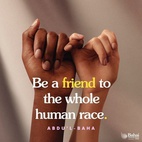
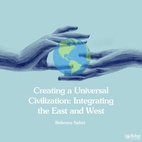
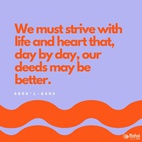
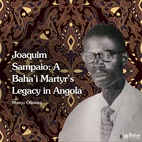
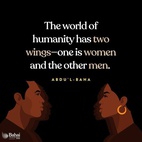


Comments
Sign in or create an account
Continue with Googleor